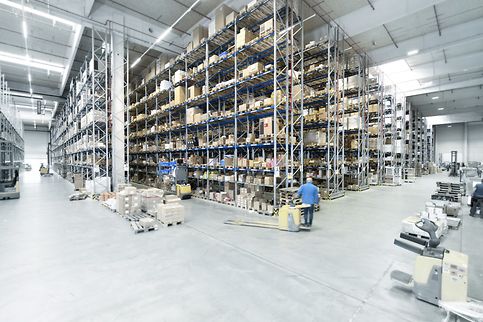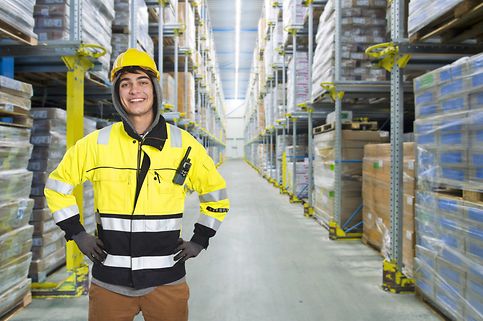Risks of skipping rack inspection
Vehicle owners are well aware of it: Motorbikes, cars or trucks have to be inspected periodically to ensure that they meet acceptable standards of roadworthiness and emission. The frequency of the inspection depends on the type and age of the vehicle.
The same applies to warehouse racking systems. They have to be checked on a regular basis. Even though it may not be a statutory requirement in some countries, inspection of warehouse racks and shelves is crucial for warehouse owners and operators. Most racks and shelves are static and sheltered from harsh weather conditions, however, the environment in which these racks operate is highly dynamic with frequent loading and unloading of load carriers. Should the racks fail, consequences may be serious.
Rack failures can be very dangerous and damaging. The cumulative effect of wear and tear over the years can damage even the most robust system. Being hit by forklift trucks, which occurs more frequently than one would expect, or transporting loads above weight limits can also hasten the pace. As racks often have a height of more than 10 meters, one collapsing rack can trigger a chain reaction that not just affects one row, but an entire section.
Some rack damages can be detected easily, for example when structural components are bent, twisted or broken. However, some damages are more difficult to spot without closer inspection. By conducting pallet racking safety assessments on a regular basis, issues can be identified and rectified, which reduces the risk of costly and potentially dangerous accidents. While companies may be cash tight in these uncertain economic times, the costs in case of a rack collapse, both direct and indirect, exceed by far any sum companies may have to spend on inspection and maintenance.
Still not convinced? Then have a look at some of the risks when skipping inspections.
Staff injury. Depending on the nature of the accident, one staff or several may be affected. With the heavy equipment used in warehouses, the risk of major injuries is very high.
Damage to equipment and inventory. Damaged equipment caused by collapsing racks has to be repaired and inventory loss must be replaced.
Disruption of work operation. As most companies operate on tight timelines in the interest of cost and efficiency, the accident will have repercussions across the supply chain. Components may not be available when needed, which may affect the entire plant production.
Temporary storage. If the rack failure is extensive, it may become necessary for the company to transfer existing stocks to a temporary storage, which will incur extra costs.
Inspection by health and safety authority. Depending on the nature of the accident, it may trigger inspection by the country’s factory health and safety authority. If the company is found to contravene any regulation, it will be taken to task. This may involve a stop work order, prosecution or fine.
Staff litigation. Staff with incapacitating injuries may take the company to court for not providing a safe working environment.
Adverse publicity. News about accidents spread very quickly in our inter-connected world. The customers’ confidence in the company is likely to take a hit.
Demoralized workforce. Staff morale may be adversely affected, which is never a good thing in the service industry as staff performance is often a differentiating factor. Having dissatisfied staff may lead to more accidents.
Higher insurance premiums. With a higher risk profile, insurance premiums will possibly increase.
Diminished bottom-line. All the points above will be reflected in poorer financial performance.
How often should you inspect your warehouse racking system?
The frequency depends on the usage. For companies involved in brisk online markets where operational throughput, forklift and personnel traffic and warehouse activities are high, it is crucial to have dedicated staff conducting routine checks together with third-party experts in storage system design and installation requirements. Professional risk assessments for warehouse racking should be conducted at least once a year.
At SSI SCHAEFER, we encourage our customers to work with our rack safety officers for maintaining and improving existing storage systems. The safety enhancements will raise efficiency in your everyday operation to achieve greater results. Rack inspection procedures comply to the European Standards (EN 15635) and are carried out by our own officially certified racking system inspectors via a visual control. The results are documented within our Computerized Maintenance Management System (SSI SCHAEFER CMMS) tool and indicated by an inspection badge. All relevant information and photos that are collected in the course of the rack inspection are digitally stored within the SSI SCHAEFER CMMS App. Finally, all recorded data is summarized right away in an automatically generated PDF report. Additionally, the digitally stored data can be visualized and analyzed to derive profound conclusions.
For more information on risk audits and assessments, check with competent consultants or speak to your warehouse racks and shelving manufacturer to provide you with relevant information and assist you in making an informed decision.







